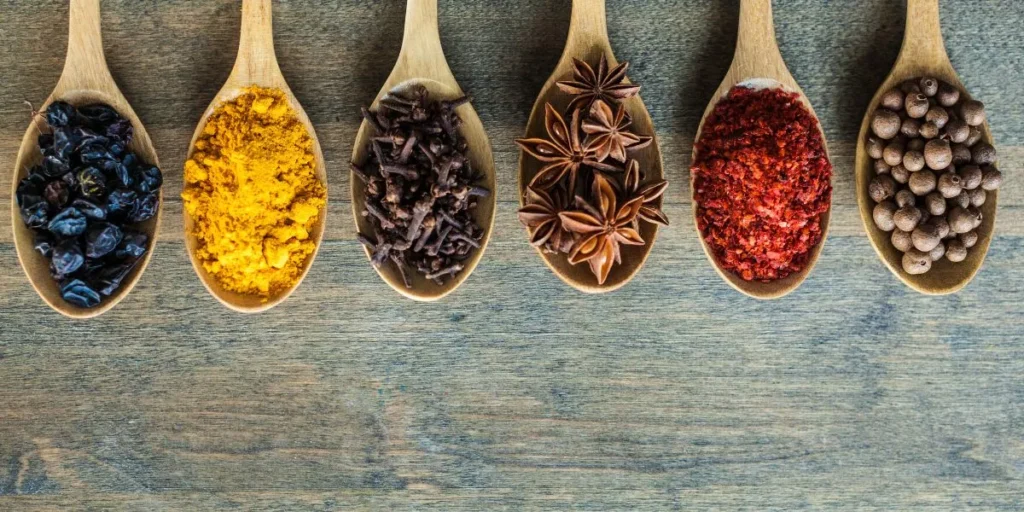
If you’ve ever wanted to master the art of making authentic Indian curries, understanding the intricate world of spices is key. Imagine being able to recreate those rich, aromatic flavors that you usually only find at your favorite Indian restaurant. By demystifying the role of spices and learning the techniques to bring out their full potential, you can take your curry game to the next level. So, are you ready to elevate your culinary skills and create curries like a true pro?
Essential Indian Spices for Curries
To make authentic Indian curries, you need to familiarize yourself with the essential Indian spices. These spices are the heart and soul of Indian cuisine, adding depth, flavor, and aroma to your dishes.
Cumin, coriander, turmeric, and garam masala are staples in Indian cooking. Cumin brings a warm, earthy flavor, while coriander adds a citrusy note. Turmeric not only imparts a vibrant yellow color but also offers a mild, peppery taste. Garam masala, a blend of different spices like cardamom, cinnamon, and cloves, provides a rich and complex flavor profile.
Moreover, mustard seeds, fenugreek, and curry leaves are also commonly used in Indian curries. Mustard seeds offer a nutty flavor and are often tempered in hot oil to release their aroma. Fenugreek brings a slightly sweet and bitter taste, enhancing the overall complexity of the dish. Curry leaves add a unique citrusy and aromatic flavor that’s quintessentially Indian. By incorporating these essential spices into your cooking, you can elevate your curries to a whole new level of authenticity and deliciousness.
Understanding Spice Combinations
Unlock the art of creating flavorful curries by mastering the intricate dance of spice combinations. Understanding how different spices interact with one another is key to elevating your dishes to a professional level. Each spice brings its unique flavor profile to the mix, and when combined thoughtfully, they can create harmonious and complex taste experiences.
When experimenting with spice combinations, start by considering the base flavors you want to highlight in your curry. For example, if you’re aiming for a robust and earthy dish, combining cumin, coriander, and turmeric can achieve that desired effect. On the other hand, if you prefer a spicier profile, blending chili powder, black pepper, and mustard seeds can add a fiery kick to your curry.
Remember that balance is crucial when working with spice combinations. Too much of one spice can overpower the others, resulting in an unbalanced and overwhelming flavor. Start with small amounts of each spice and adjust as needed to achieve the perfect blend that suits your palate. Mastering spice combinations is a skill that will take your curry-making prowess to new heights.
Techniques for Enhancing Flavor
Enhance the flavors of your curries by employing various techniques to elevate the taste experience. One effective method is to toast whole spices before grinding them. Toasting releases essential oils, intensifying the flavors of spices like cumin, coriander, and cardamom. Another technique is blooming ground spices in hot oil at the beginning of cooking. This process enhances their aroma and infuses the oil, ensuring even distribution of flavors throughout the dish.
Furthermore, incorporating layers of flavor by adding ingredients at different stages of cooking can result in a more complex and satisfying curry. For example, adding a sprinkle of garam masala towards the end of cooking can provide a burst of fresh, aromatic flavors. Additionally, using fresh ingredients such as ginger, garlic, and herbs can elevate the overall taste profile of your curry.
Experimenting with souring agents like tamarind, vinegar, or yogurt can balance the flavors and add a tangy kick to your dish. Lastly, don’t underestimate the power of seasoning with salt and sugar to enhance the natural flavors of the spices and ingredients in your curry.
Tips for Perfecting Curry Dishes
For achieving exceptional results in your curry dishes, consider incorporating a variety of aromatic spices and adjusting cooking times to maximize flavor infusion. Begin by toasting whole spices like cumin, coriander, and cardamom to release their essential oils before grinding them for a fresher taste. Experiment with different spice blends such as garam masala, curry powder, or sambar powder to create depth and complexity in your curries.
To enhance the richness of your curry, sauté onions, garlic, and ginger until they’re deeply caramelized before adding other ingredients. This step adds a savory base that intensifies the overall flavor profile. Don’t rush the cooking process; allowing your curry to simmer gently over low heat helps meld all the spices and ingredients together for a harmonious dish.
Lastly, don’t be afraid to adjust the seasoning towards the end of cooking. Taste your curry and add more salt, spices, or a touch of sweetness, like a bit of honey or coconut milk, to balance the flavors perfectly. With these tips, you’ll be on your way to creating mouthwatering curry dishes like a pro.
Trending Products














